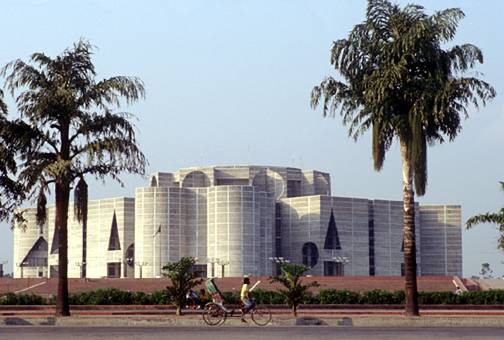|
|
|
Dhaka-Bangladesh/Bengal:

Sonargano - an Ancient Capital
Dhaka:
Presently Dhaka is the capital of Independent Bangla deah. It was also the capital of Bengal between late 16th to early 18th century. Dhaka has been an important trade center for over 1000 years. Together with its surrounding area of Bikrampura, Dhaka was established long before the arrival of 16th century Moghul invasion from the West. Although the independent Sultans and rulers lost out to the Mughols, the countries economy improved with Bengal becoming bread basket of the Mughols.
Important architectural legacies of the Mughal period, mainly concentrated in Dhaka, are the Bara and Chhota Katras, the unfinished Lalbagh Fort, tomb of Bibi Pari, Sat Gumbad Masjid, the Mosques of Haji Khwaja Shahbaz (1679), Khan Muhammad Mridha and Kartalab Khan (1704), the Husaini Dalan and a series of river forts at Idrakpur in Munshiganj, Hajiganj and Sonakanda in Narayanganj. The magnificent Katra buildings were erected in the middle of 17th century on the traditional Central Asian plan of caravanseries with a grand river front and monumental gateways. The Lalbagh Fort or the Aurangabad Fort, as it was originally named, is the unfulfilled dream of a Mughal prince. Emperor Aurangazeb's third son, prince Azam beganits construction on a grand scale in 1678 while he was Viceroy of the province, but could not complete it during his very short tenure of office. Shaista Khan the next governor continued the work, as credited by tradition, but abandoned it, following the unexpected death of his favourite daughter Bibi Pari which he considered inauspicious.
The fort occupies the south-western part of the old city overlooking the Buriganga on whose northern bank it stands as a silent sentinel of the old city. It is one of the noblest Mughal monument in this region. It conforms to the general characteristics of the imperial Mughal architecture and accomodates a number of striking buildings inside, such as the Audience Hall and Hammam of the governor and the mausoleum of Bibi Pari. The two storeyed Audience Hall has a hut-shaped curved roof and is provided with elaborate arrangement for water supply to its hammam through concealed earthen pipes.
The unique tomb of Bibi Pari, the traditionally attributed daughter of governor Shaista Khan, is the only monument in Bangladesh where marble stones from Rajputana, black basalt from Rajmahal and glazed tiles have been used to embellish the interior of its nine chambers, whereas the roofs of the chambers are spanned by massive overlapping courses of b,alck basalt on the principle of corbel. The central tomb chamber is covered outside by a false copper dome in order to bring balance to the otherwise flat, unimposing composition.